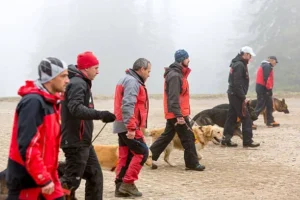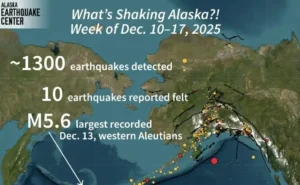Alaska’s industries increasingly relied on nonresident workers in 2023 as labor shortages and population declines intensified across the state. The Alaska Department of Labor and Workforce Development reported 92,664 nonresident workers last year, accounting for 23.5% of the workforce, the highest rate since 1995.
State economist Rob Kreiger analyzed the data, highlighting a growing dependence on Alaska’s nonresident workforce across nearly all industries. “I do think the workers shortage persisted in 2024, which could result in numbers similar to what we saw in 2023,” Kreiger said.
Krieger’s findings appeared in the February edition of Alaska Economic Trends, a monthly publication by the labor department. The construction sector saw the most significant rise in nonresident employment driven by federal infrastructure projects and increased oil development.
Construction jobs for nonresidents increased by 24%, with the North Slope experiencing the most dramatic growth. The number of nonresident construction workers there nearly tripled, jumping from 255 to 745 in just one year.
Alaska’s oil and gas industry also saw an increase, with 37.4% of workers in 2023 classified as nonresidents, up from 36% the previous year. Nonresidents make up 45% of the oil and gas workforce on the North Slope.
Meanwhile, the metals mining industry reported 41.6% nonresident employment, a minor increase from 41.1% in 2022. Seafood processing, a sector long dependent on nonresident workers, reached its highest reliance yet.
In 2023, 82.8% of seafood processing jobs were filed by nonresidents, up from 74% in 2014. Tourism, another seasonal industry, also saw an increase in nonresident workers. Even Alaska’s healthcare industry faced worker shortages, with nonresidents compromising 14.1% of its workforce.
20.5% of the registered nurses were nonresident in 2023. Local and state governments also saw an increase, with nonresidents making up 9.3% of their workforce. As Alaska’s nonresident workforce shortages persist, the state’s reliance continues shaping its job markets.
This news article was originally published by the Alaska Beacon.












